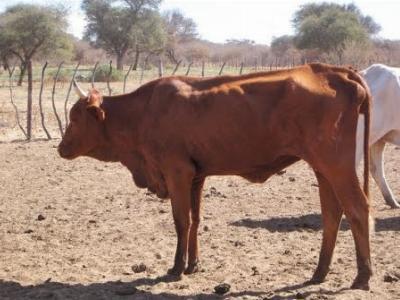Diseases of Cattle: ANAPLASMOSIS

Anaplasmosis is a vector-borne, infectious blood disease in cattle caused by the rickesttsial parasites Anaplasma marginale and Anaplasma centrale. It occurs primarily in warm tropical and subtropical areas. The disease is not contagious but is transmitted most commonly by ticks. It can also be transmitted via contaminated needles, dehorning equipment, castrating knives, tattoo instruments, biting flies and mosquitoes. The intracellular parasite destroys red blood cells. It causes anemia, fever, weight loss, breathlessness, uncoordinated movements, abortion and death. Diagnosis is based on clinical signs and the examination of blood under microscope for evidence of the parasite.
Affected cattle either die or begin a recovery within 4 days after the first signs of the disease. The mortality rate increases with the age of the animal. Unless infected cattle are detected during the early stages of the disease they should not be treated. If an animal with advanced anaplasmosis is forced to move or becomes excited, it may die from lack of oxygen, also antibiotic treatments do little or nothing to affect the outcome of the disease when given during advanced stages of the disease. Treatment consists of the administration of tetracycline. A vaccine is available that helps to reduce the severity of the infection. If you have any cattle with this disease it is very important to control ticks and follow strict sanitation procedures during vaccinations and other procedures to stop the spread of the disease to healthy animals. Animals that recover from anaplasmosis are carriers and can spread the disease.
Chlortetracycline also known as CTC can reduce the risk of anaplasmosis. Chlortetracycline (CTC) consumed at the rate of 0.5 mg / lb. body weight daily during fly and tick season will help to prevent anaplasmosis. A consistent intake of the correct amount of mineral is crucial to a anaplasmosis prevention program. CTC is available in medicated feed, free choice salt-mineral mixes or medicated blocks. Be sure the product is labeled for anaplasmosis control and follow the label instructions exactly.
Related news
 How to prevent milk fever in dairy cows
How to prevent milk fever in dairy cows Prevention strategies include manipulation of the cow’s close-up diet post-calving. Hypocalcaemia, or milk fever, is a common occurrence in dairy operations
 How to formulate better ruminant diets
How to formulate better ruminant diets Understanding that soluble protein does not equal degraded protein is essential for maximizing the positive effects of formulations.
 Make lameness control a priority this winter
Make lameness control a priority this winter As farmers prepare to house their cows for the winter months, now is the perfect time to review lameness protocols to incorporate the latest research findings